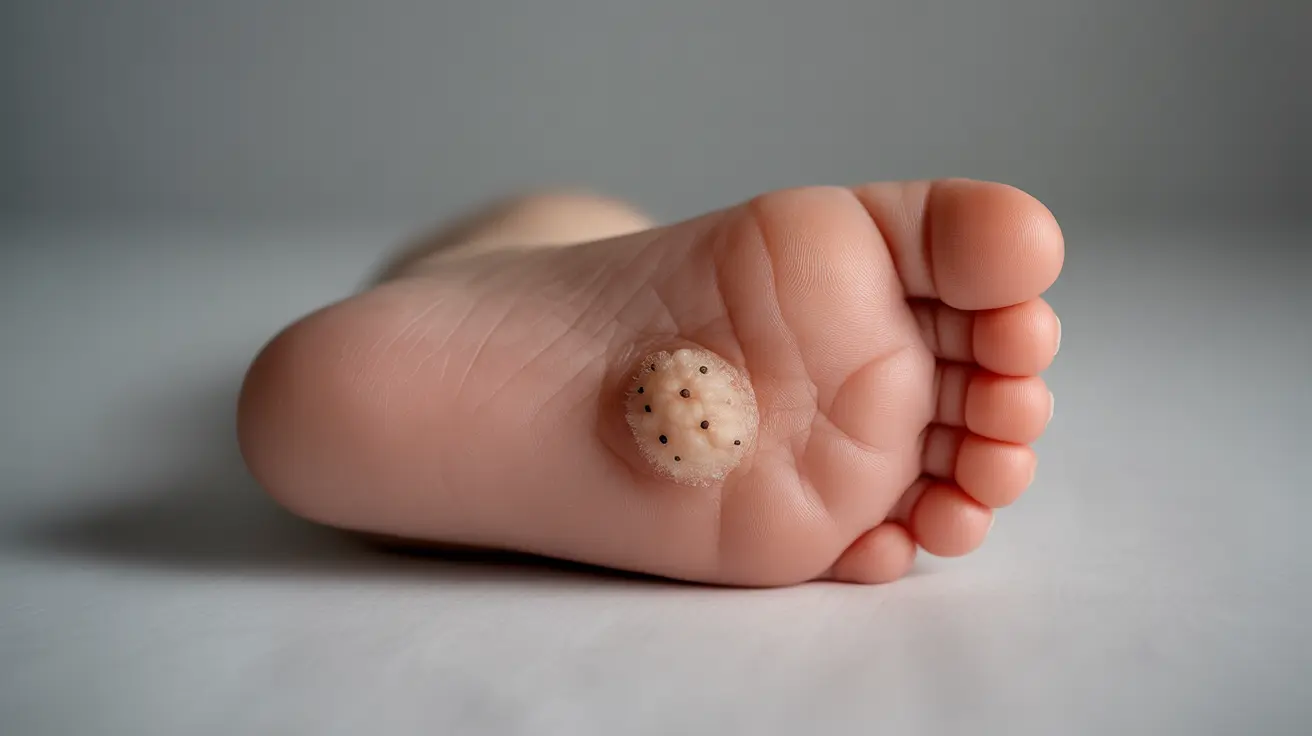Discovering a wart on your baby's foot can be concerning for any parent. These small, rough growths are caused by the human papillomavirus (HPV) and, while generally harmless, may cause discomfort for your little one. Understanding how to identify and treat these common skin conditions is crucial for ensuring your baby's comfort and well-being.
This comprehensive guide will help you understand everything you need to know about warts on baby feet, from identification to treatment options and prevention strategies.
Identifying a Wart on Your Baby's Foot
Warts on babies' feet, also known as plantar warts, have distinct characteristics that set them apart from other skin conditions:
- Small, rough, grainy growths
- May have tiny black dots in the center
- Can appear alone or in clusters
- Often found on pressure points of the foot
- May cause tenderness when walking
If you notice these signs, it's important to have your pediatrician confirm the diagnosis, as other skin conditions can sometimes look similar.
Treatment Options for Baby Foot Warts
Over-the-Counter Treatments
Several gentle treatment options are available for managing warts on your baby's foot:
- Salicylic acid patches (specifically formulated for children)
- Over-the-counter wart removal solutions
- Duct tape occlusion method
Always consult with your pediatrician before starting any treatment, as some methods may be too harsh for your baby's sensitive skin.
Professional Medical Treatments
When home remedies aren't effective, your doctor might recommend:
- Gentle cryotherapy (freezing)
- Prescription-strength medications
- Laser therapy in specific cases
Prevention Strategies
While warts can be challenging to prevent entirely, several measures can reduce your baby's risk:
- Keep feet clean and dry
- Use waterproof sandals in public pools or changing areas
- Regular inspection of feet for early detection
- Avoid direct contact with existing warts
- Maintain good hygiene practices
When to Seek Medical Attention
Contact your pediatrician if:
- The wart is painful or bleeding
- Home treatments aren't working after several weeks
- Multiple warts develop
- You're unsure if the growth is actually a wart
- Your baby shows signs of discomfort while walking
Frequently Asked Questions
What are the symptoms of a wart on a baby's foot, and how can it be identified?
A wart on a baby's foot typically appears as a small, rough growth that may have black dots in the center. It might be slightly raised or flat and can cause tenderness when pressed. The growth is usually flesh-colored or grayish and may appear more prominent on pressure points of the foot.
How are plantar warts typically treated in toddlers, and what are the most effective methods?
The most effective treatments for toddlers include gentle over-the-counter treatments with salicylic acid, prescribed medications, and professional treatments like mild cryotherapy. The choice of treatment depends on the wart's size, location, and your child's age and comfort level.
Can plantar warts be prevented, and what steps can be taken to reduce the risk of getting them?
While not entirely preventable, you can reduce the risk by keeping feet clean and dry, using protective footwear in public wet areas, and avoiding direct contact with existing warts. Regular foot inspections and maintaining good hygiene practices are also essential prevention strategies.
What are the differences between salicylic acid and cryotherapy treatments for plantar warts in children?
Salicylic acid works by gradually removing infected tissue layers and is generally gentle but requires consistent application. Cryotherapy freezes the wart tissue quickly but may be more uncomfortable and usually requires multiple professional treatments. Salicylic acid is often preferred for young children due to its gentler nature.
How long does it usually take for plantar warts to go away on their own, and when should treatment be considered?
Plantar warts may take months to years to resolve on their own. Treatment should be considered if the wart causes pain, spreads, or persists beyond several months. Early intervention can prevent the wart from growing larger or spreading to other areas.




